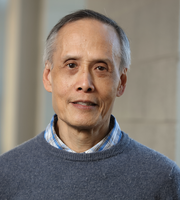Machine Learning Algorithm Predicts How Multiple Alloyed Elements Interact
A new class of materials known as high entropy alloys (HEAs) has generated considerable excitement in the materials research community.
The number of possible HEAs can easily exceed a million or even billion, resulting in vastly numerous possible compositions and crystal structures. The large degree of compositional freedom provides vast and unique opportunities for discovering outstanding properties that will benefit society.
The challenge is finding the right compositions. Joseph Poon, University of Virginia William Barton Rogers Professor of Physics with a courtesy appointment in materials science and engineering, and his student Jie Qi, use data science to predict crystal structures and properties. They mine relevant data from binary phase diagrams for each pair of elements in a given alloy, then use machine learning to predict how they will work together. Their algorithm has achieved 81% accuracy in predicting multiple phases simultaneously when tested against the reported crystal structures of more than 800 high entropy alloys.
“Machine learning is the first stage,” Poon said. “It is a very good starting point, because it really helps you to avoid having to deal with a million samples.”
Guided by Poon’s and Qi’s computational results, researchers can synthesize compounds that look promising, experiment on them, and then feed what they’ve learned back into the machine learning algorithm to refine its predictions. The result is an alloy design process that is more agile and efficient, transitioning more high entropy alloys into fundamental research in materials physics, and equally important, practical use in catalysts, photovoltaics, thermoelectrics and battery materials as well as aerospace applications. Poon’s work is recently featured in AMERICAN CHEMICAL SOCIETY CENTRAL SCIENCE.
 Physics at Virginia
Physics at Virginia

